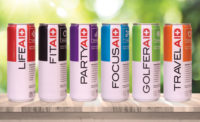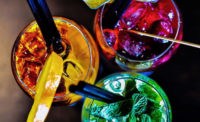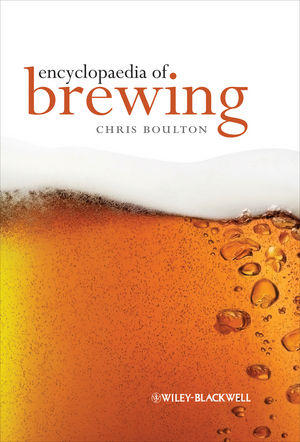Functional beverages influencing millennials
Fiber, protein fortification support new beverage launches

Not too long ago, a discussion about how much fiber and protein each of us on the editorial staff actually consumes led to what we now have dubbed The Fiber-Protein Challenge. The premise is for each of us to track how much protein and fiber we consume in a day to make sure we are meeting the daily recommended goals.
My original plan was to get some poster board to display our consumption and help us all to encourage one another. Although I haven’t done that yet, my plan is to get it going before the holiday rush hits. Until then, it’s been more of a fun, casual exchange asking each other whether we hit our goals. Luckily for us (and anyone else who wants to do their own challenge), fortified products have made it much easier to meet these goals.
In a recent trends report from FONA International titled “Millennials & Functional Beverages,” the ingredient manufacturer highlights a number of ways that this demographic is being drawn to functional beverages. One of the topic points was Protein for Overall Health. Citing data from the NPD Group, the trend insight states that 42 percent of millennials (ages 22-36) list protein as an important nutrient for supporting their overall health. It adds that millennials respond favorably to the satiety and muscle benefits that protein provides.
Supporting this point, the insight’s topic point Meal Replacement detailed that meal replacement protein shakes and smoothies are a go-to for millennials for their inherent convenience.
Additionally, consumers are clamoring for more protein in their diets. According to Nielsen’s August 2014 report titled “Health & Wellness in America,” 54 percent of consumers indicated that they wanted more protein when the report was fielded in 2013. This is up from 49 percent in 2009.
Beverage-makers also are recognizing the popularity of protein. For example, Lifeway Foods expanded distribution of its Protein Kefir to Harris Teeter, and Nestlé Health Science launched its Boost line of nutrition drinks, which contain 10 grams of protein in each 4-ounce serving.
This month’s Ingredient Spotlight on protein (page 68) echoes these trends, and elaborates on the different types of protein beverage-makers can use to fortify these functional beverages.
But just as important as protein is to The Fiber-Protein Challenge, fiber also is key to the challenge and beverage trends. In Nielsen’s report, 58 percent of consumers surveyed in 2013 indicated that they want more fiber. Although this was down from 61 percent in 2009, more than half of respondents still are noting the need for the nutrient.
It looks like the editors at Beverage Industry aren’t the only ones looking to include more fiber and protein in their diets.
Looking for a reprint of this article?
From high-res PDFs to custom plaques, order your copy today!







